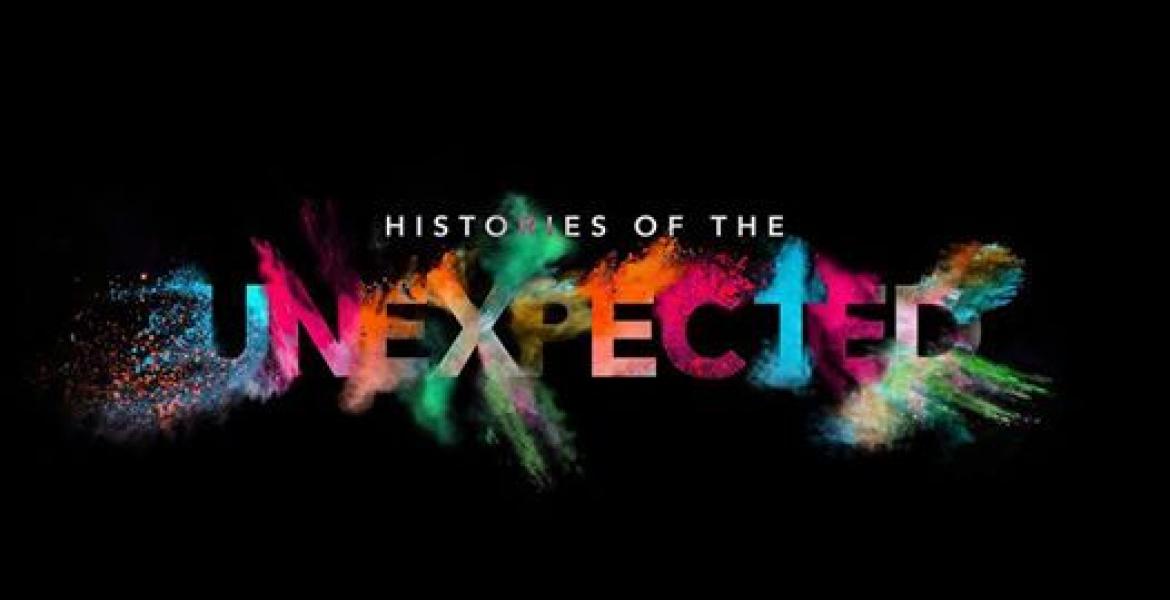Sam Willis and James Daybell: In Conversation
Dr Sam Willis is an award-winning historian, archaeologist and broadcaster whose television series have included The Silk Road, Shipwrecks, and Britain’s Outlaws. His books focus on maritimeConnected with the sea, especially in relation to seaborne trade or naval matters.Connected with the sea, especially in relation to seaborne trade or naval matters.Connected with the sea, especially in relation to seaborne trade or naval matters.Connected with the sea, especially in relation to seaborne trade or naval matters.Connected with the sea, especially in relation to seaborne trade or naval matters.Connected with the sea, especially in relation to seaborne trade or naval matters.Connected with the sea, especially in relation to seaborne trade or naval matters.Connected with the sea, especially in relation to seaborne trade or naval matters. history and include the best-selling Hearts of Oak trilogy and the Fighting Ships series, as well as the recently-published Spanish Armada for the Penguin Ladybird Expert series.
James Daybell is Professor of Early Modern British History at Plymouth University and Fellow of the Royal Historical Society. His research focuses on early modern British and European social, cultural and political history, with a particular emphasis on gender and materiality, and his many books, including Women and Politics in Early Modern England, The Material Letter, Gender and Political Culture, and Cultures of Correspondence, have become essential reading for students of history.
In 2016, the two teamed up to create a podcast on histories of the unexpected, to reveal surprising facts and new perspectives on the history of anything and everything. The podcast has proven so successful that they have created a live show, touring until March 2019, and just released a fascinating 400-page book, Histories of the Unexpected. We caught up with them after their brilliant, informative, and engaging show at Stowe House.
What’s the history of Histories of the Unexpected?
Sam: I'd been reading Roald Dahl's Tales of the Unexpected and the title inspired me to do histories of subjects that were unexpected; histories of things that you didn't think had a history. So, I got together with James – I’d already met him a couple of times – and talked about it. He liked the idea and we started to challenge ourselves to write histories of things that we didn't think have histories, like mountains or the lean or the itch or cold: weird stuff. We found it very enjoyable and started off with the podcast on windows. I'd been leading a tour around HMS Victory, which has a big window on the back. This is like having a conservatory on the back of a tank: it made no sense and the only way you could explain it is that there's a history of looking out of windows.
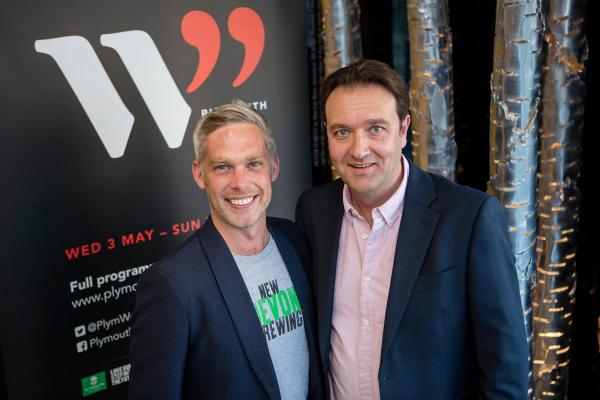
James: When I met with Sam for coffee and Sam told me the story about windows, I thought, 'The history of windows is also about the Thirty Years’ War, and defenestrationThe act of throwing someone or something out of a window. The act of throwing someone or something out of a window. The act of throwing someone or something out of a window. The act of throwing someone or something out of a window. The act of throwing someone or something out of a window. The act of throwing someone or something out of a window. .’ It's about smashing windows and about throwing people out of them. It's about iconoclasm and the ReformationThe split from the Roman Catholic Church of protestants, inspired by people such as Martin Luther, John Calvin, and Huldrych Zwingli.The split from the Roman Catholic Church of protestants, inspired by people such as Martin Luther, John Calvin, and Huldrych Zwingli.The split from the Roman Catholic Church of protestants, inspired by people such as Martin Luther, John Calvin, and Huldrych Zwingli.The split from the Roman Catholic Church of protestants, inspired by people such as Martin Luther, John Calvin, and Huldrych Zwingli.The split from the Roman Catholic Church of protestants, inspired by people such as Martin Luther, John Calvin, and Huldrych Zwingli.The split from the Roman Catholic Church of protestants, inspired by people such as Martin Luther, John Calvin, and Huldrych Zwingli.The split from the Roman Catholic Church of protestants, inspired by people such as Martin Luther, John Calvin, and Huldrych Zwingli.The split from the Roman Catholic Church of protestants, inspired by people such as Martin Luther, John Calvin, and Huldrych Zwingli. and stained glass. And then I thought, ‘That's exactly like the history of the orange’. I thought about the Gunpowder Plot and John Gerard's autobiography where he describes an orange smuggled into Fleet prison. He uses the flesh to bribe the gaoler and he preserves the orange juice to smuggle out secret writings. And it went from there.
Sam: We started off the podcast and have done ninety different subjects, I think now. Then there’s the book, which has thirty different ideas, and each one links to the next one and the first links to the last. We go from the hand, to the glove, to perfume, bubbles, shadows, and then to beards, clouds, and dust. We do clocks, needlework, the itch, then holes, and then the bed, dreams, and hair. From hair we move on to the paperclip, letters, and boxes; to courage, mountains, chimneys, and tears, then lions, then rubbish, then snow. From there we talk about cats, the smile, the scar, the lean, and then the signature, which links us back to the hand. So, as well as the idea that everything has a history, even the most unexpected of subjects, everything also links together in unexpected ways; those are the two really important parts of Histories of the Unexpected. It's a narrativeA story; in the writing of history it usually describes an approach that favours story over analysis.A story; in the writing of history it usually describes an approach that favours story over analysis. A story; in the writing of history it usually describes an approach that favours story over analysis. A story; in the writing of history it usually describes an approach that favours story over analysis. A story; in the writing of history it usually describes an approach that favours story over analysis. A story; in the writing of history it usually describes an approach that favours story over analysis. A story; in the writing of history it usually describes an approach that favours story over analysis. A story; in the writing of history it usually describes an approach that favours story over analysis. where each one goes to the next and moves on and on from there.
James: Dust links to beards because during the nineteenth century in factories they were advised to grow a beard to keep out the dust. That links to the Crimean WarA war fought between Russia, and Britain, France, Turkey and Sardinia from 1853 to 1856. It was concerned primarily with the expansion of Russia but it also had religious overtones.A war fought between Russia, and Britain, France, Turkey and Sardinia from 1853 to 1856. It was concerned primarily with the expansion of Russia but it also had religious overtones. A war fought between Russia, and Britain, France, Turkey and Sardinia from 1853 to 1856. It was concerned primarily with the expansion of Russia but it also had religious overtones. A war fought between Russia, and Britain, France, Turkey and Sardinia from 1853 to 1856. It was concerned primarily with the expansion of Russia but it also had religious overtones. A war fought between Russia, and Britain, France, Turkey and Sardinia from 1853 to 1856. It was concerned primarily with the expansion of Russia but it also had religious overtones. A war fought between Russia, and Britain, France, Turkey and Sardinia from 1853 to 1856. It was concerned primarily with the expansion of Russia but it also had religious overtones. , and so on. Some of the links actually took a long time to find, so we wrote the chapters and then we had to link it all together.
Sam: That was a challenge: you can write a chapter on the history of mountains quite easily, but then you've got to go somewhere.
James: For example, we linked mountains to snow, but it wasn't obviously snow on mountains either: it's more complicated than that.
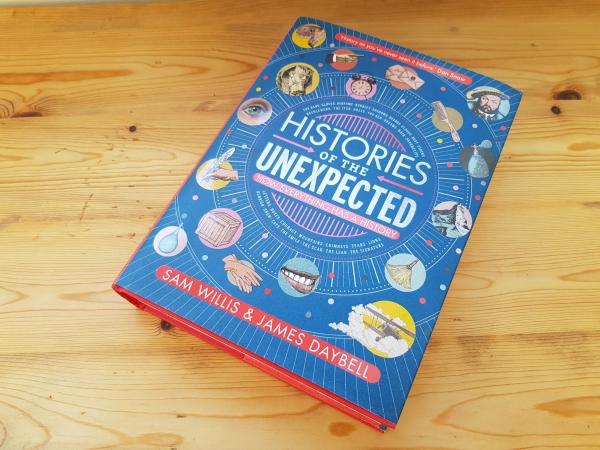
Sam: It’s also making the connections within chapters. We wrote 'The Lean', because I saw a really interesting tree that was leaning to one side, and I thought, 'We'll do the lean', and it ended up being about buildings - leaning buildings as opposed to beautifully created buildings – and that’s all to do with Paris in the nineteenth century: they knocked down medieval Paris and built everything with straight lines. It was also to do with disabled people with walking sticks being hunched over and leaning and how that is represented in history. When I wrote about the Greenwich Pensioners, James wrote about women being made to walk around with books on their heads and perfectly straight backs. This really contrasted with James Dean who in the 1950s was doing everything he possibly could to not look like a soldier. And that involved leaning wonkily, and 1950s rock. It was so interesting!
James: It is also about leaning on people, about medieval tyrants and thumbscrews, and that's how we got to the signature: Guy Fawkes, thumbscrews, broken hands.
Sam: Also, we’re doing a Histories of the Unexpected LIVE tour. We've been working with a guy called Daniel Jamieson, who's a very young, bright and brilliant playwright and he's taken what he thinks are the ideas that work best with a live audience. He helped us turn it into a show with props and audio-visual elements and all sorts of stuff to give it a bit more colour. We've worked with a creative artist to do graphics and film. That's what the live talks are about. It's like the opposite of a book tour.
So, what’s next?
Sam: So, we've done the big book and now we're doing a series, we're doing Histories of the Unexpected: The Vikings; we're doing Histories of the Unexpected: The Tudors; and also the Second World WarA global war that lasted from 1939 until 1945.A global war that lasted from 1939 until 1945. A global war that lasted from 1939 until 1945. A global war that lasted from 1939 until 1945. A global war that lasted from 1939 until 1945. A global war that lasted from 1939 until 1945. A global war that lasted from 1939 until 1945. A global war that lasted from 1939 until 1945. and the Romans. Of course, each one covers the unexpected parts. The Tudors, for example, is not all about Henry VIII, Anne Boleyn, and the Tower of London. The Tudors is all about things like monsters, toilets, oranges, windows, lists – lists is brilliant – fire, shrinking – which I loved – accidents, cannibalismThe practice of eating the flesh of the same species (so, human eating human, or dog eating dog).The practice of eating the flesh of the same species (so, human eating human, or dog eating dog).The practice of eating the flesh of the same species (so, human eating human, or dog eating dog).The practice of eating the flesh of the same species (so, human eating human, or dog eating dog).The practice of eating the flesh of the same species (so, human eating human, or dog eating dog).The practice of eating the flesh of the same species (so, human eating human, or dog eating dog).The practice of eating the flesh of the same species (so, human eating human, or dog eating dog). and rings. It’s the same principle with the Vikings and the others; for the Second World War I’m writing about cancer and the Nazi war on cancer. It's brilliant fun.
James: So, they’re smaller 30,000-word books. We've given ourselves a really tough schedule and we've written two of them: Tudors and Vikings. We've now got to write World War Two and the Romans. The Tudors was easy for me, because I’m a professor of Tudor history, but with the Vikings it was so complicated methodologically. You've got all this intersection between the archaeological evidence and the fragmentary literary evidence that survives from the time, then you've got the way in which that's transmuted through the saga literature and then how that feeds back to reality. So, that took a long time to sort. But it was really, really fascinating. I'm obsessed with graffiti, and with the Vikings. In the Viking book there's a chapter on graffiti, and graffiti is all about Viking travel: you can map how far the Vikings have gone. Not just through chronicles but from the physical ruins that survive around the world, which is quite fun. I've taught the Vikings and I've studied them, but I enjoyed really digging down and researching more. In the car today we've proofed Vikings, and then we’ll do World War Two. My aim is to write that one before Christmas, although I don’t know whether that will happen. We’re going to do the Romans after Christmas.
How do you go about researching these things?
James: The first thing we do is map out what we want to do, and we map out our ideas. Part of it is about thinking about associations. How do you start a project from an unexpected point of view? You've got to immerse yourself in the material. You sit down with a pen and you draw a kind of taxonomyA scheme of classification.A scheme of classification. A scheme of classification. A scheme of classification. A scheme of classification. A scheme of classification. of how a topic works, and then it's bibliographies, search engines and online databases and articles. The dilemma for the academic historian is how do you take something like the Vikings, which is such as scholarly area, and take that scholarship and stay genuine to it, yet make it accessible to a broad audience? That is right at the heart of what public history is and it's difficult. So, with the Vikings, there was a lot of work searching out new PhDs and new articles, and there’s some really exciting scientific work being done around DNAHolds the genetic code to all living things, and is passed down to children from their parents.Holds the genetic code to all living things, and is passed down to children from their parents.Holds the genetic code to all living things, and is passed down to children from their parents.Holds the genetic code to all living things, and is passed down to children from their parents.Holds the genetic code to all living things, and is passed down to children from their parents.Holds the genetic code to all living things, and is passed down to children from their parents.Holds the genetic code to all living things, and is passed down to children from their parents.Holds the genetic code to all living things, and is passed down to children from their parents. and teeth. There’s a lot of cutting-edge stuff.
Sam: We want to basically tap into the most creative and original new thinking. There’s all sorts of wonderful information out there, you've just got to know where to look for it. We use things like the Journal of Material Culture or history publications that publish interesting new stuff. Then it's just about thinking creatively about what you're reading and realising that you can think about this area of the past in a slightly different way. It's a very, very creative process and hugely rewarding.
James: The other thing is that, as a gender historian, I want gender to be an important part of Histories because that's an important – subversiveSeeking or intended to subvert an established system or institution.Seeking or intended to subvert an established system or institution. Seeking or intended to subvert an established system or institution. Seeking or intended to subvert an established system or institution. Seeking or intended to subvert an established system or institution. Seeking or intended to subvert an established system or institution. – narrative stream.
Sam: There are some things that whenever we're writing we say, 'OK we want there to be children in it, we want there to be women in it, we want there to be an international dimension. We want there to be objects’. These are some of the things that we really are focused on. Also, we want the title of every chapter of every book we do to make people think 'what?!'. That's the whole point: it's the opposite of what you'd expect. It's not 'Hampton Court', it's 'shrinking' or 'toilets', but then you read it and it makes sense. Everything we do is supposed to be a journey of discovery. It's a challenge for us as well, and you're going back in time with us.
How do you find your backgrounds help you in constructing Histories of the Unexpected?
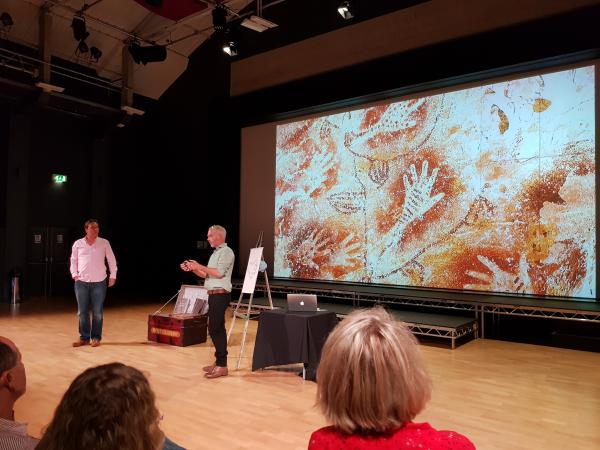
Sam: We think about the past in a completely different way; fundamentally different, but complementary. James is trained as a gender historian, a historian of a different period, a historian who thinks about objects, who thinks about all sorts of aspects of cultural and social history, and I'm at heart a historian and an archaeologist. So, I think about archaeologyThe study of the things humans have left behind. See 'Some Notes of Archaeology'.The study of the things humans have left behind. See 'Some Notes of Archaeology'.The study of the things humans have left behind. See 'Some Notes of ArchaeologyThe study of the things humans have left behind. See 'Some Notes of Archaeology'.'.The study of the things humans have left behind. See 'Some Notes of ArchaeologyThe study of the things humans have left behind. See 'Some Notes of Archaeology'.'.The study of the things humans have left behind. See 'Some Notes of ArchaeologyThe study of the things humans have left behind. See 'Some Notes of Archaeology'.'.The study of the things humans have left behind. See 'Some Notes of ArchaeologyThe study of the things humans have left behind. See 'Some Notes of Archaeology'.'.The study of the things humans have left behind. See 'Some Notes of ArchaeologyThe study of the things humans have left behind. See 'Some Notes of Archaeology'.'.The study of the things humans have left behind. See 'Some Notes of ArchaeologyThe study of the things humans have left behind. See 'Some Notes of Archaeology'.'. a lot; I think about the different types of evidence that survive. But we bounce off each other and if there is something we don't know then there are two of us, two professionally-trained historians, so we can find out about stuff pretty quickly. I've written books from 2000 B.C. up to the 1950s and James has a similar scope of knowledge. Throughout our books we've got written stuff, we've got objects, we've got archaeological artefactsObjects made by humans that are of historical interest.Objects made by humans that are of historical interest.Objects made by humans that are of historical interest.Objects made by humans that are of historical interest.Objects made by humans that are of historical interest.Objects made by humans that are of historical interest.Objects made by humans that are of historical interest.Objects made by humans that are of historical interest., and lots of pictures. We're both interested in filling in the gaps of history. So it works. It wouldn't work if we were both exactly the same type of historian.
James: It’s certainly helped that we come from different historical backgrounds: it's sort of a melting pot of ideas. But popular history and academic history feed into each other. So much of what we do in university now is about impact and public engagement, any historian needs to be a hybridMade of mixed elements.Made of mixed elements. Made of mixed elements. Made of mixed elements. Made of mixed elements. Made of mixed elements. . You need to be able to take your research and digest it into something that can go the impact route, the public engagement route, that feeds into teaching, but also then be a popular thing to podcast. It's the dissemination of high quality research in a popular form. For me, it's very different from Sam, because Sam does a lot of work for television. For me it's about dissemination and it's about pathways to impact, and Unexpected will be an impact case study. It feeds in: I've got a big AHRCArts and Humanities Research Council.Arts and Humanities Research Council. Arts and Humanities Research Council. Arts and Humanities Research Council. Arts and Humanities Research Council. Arts and Humanities Research Council. project that starts in December, with people in London, Leiden, and the University of Western Australia, working with the Victoria and Albert Museum and the Vasa Museum, which is about gendered interpretations of museum collections. This is where the gloves material for Histories of the Unexpected comes from. So, for me it's the public side of what academics do.
There were two things that helped me, personally, when researching. One was being an undergraduate at Oxford and looking at comparative history. It taught me to think about a topic – religion or disease, for example – as a whole, and how to map that. Then my first proper job was at Michigan State University where I was required to teach ‘Plato to Nato’. That was really helpful for the comparative aspect. The object stuff came later, when I've worked with different people as part of an AHRC network, and with the Victoria and Albert Museum around material culture. That developed a new methodology that marries up really well with Sam's archaeological knowledge, and so bringing that aspect to it has been exciting.
What's the most unexpected history of the unexpected you've come across in your research? What's made you feel really shocked?
Sam: Mountains. It's fascinating: it's all to do with isolated communities who live in mountains and the way they're almost without history. Events could happen and they wouldn't really know about it. Mountain communities are developing at different speeds from everyone else and they've got a different concept of time, because time just doesn't mean the same thing. They all have different laws and this sense of banditry and outlaws.
James: Dust was my favourite. Dust was about microscopes, and the Dust Bowl, but there’s also an extraordinary account of cholera in the Scottish Highland villages that shows how contagious disease could be conceptualised. It’s the idea of miasma and how cholera was conceptualised as a sort of dust cloud, with this poor guy getting a sack and trying to catch the clouds of dust in it. When the sack turns yellow they bury it and put a stone across it.
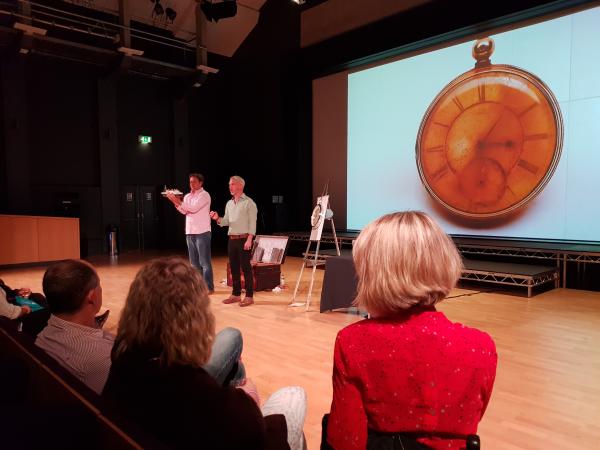
One of my favourite experiences recording the podcast, which then became a chapter in the book, was about boxes. Because of the way we work, when we record the podcasts we don't know what each other is going to do. We agree a topic, and we each go off and do our own thing, and then we come together and it's like 'boom!' So, I presented Sam with this box, which had been presented to me by a third-year dissertation student. The student’s father owned a skip company, and he brought in this box. In it were 350 letters from World War Two. So, I just showed Sam this and he had no idea and said 'well, okay, what about this?'.
Sam: I was looking at coffins. They are really interesting, particularly if you think about it in terms of making boxes for humans. There was a rush to make safety coffins, because everyone was dying from all these diseases in the eighteenth century and they were terrified of being buried alive, so they had bells and keys and stuff. Really fascinating.
Can you select from the wide range of history you have studied one particular fact that you feel you must tell everyone?
Sam: There are too many to select just one, but it’s probably something about chimneys for me: people finding things up chimneys. Chimneys are an archive, basically. You need to go and look up your chimney. You wouldn't believe the stuff that’s been found up them. People put shoes up chimneys, and cats, and documents. They send letters up them. If you do an architectural history of chimneys it can be really boring, but actually if you think about it is an archive, as a place to put stuff, it's great.
James: The history of cats is quite interesting. Cats are about Robert Darnton's Great Cat Massacre, and the French Revolution. It’s the whole symbolism of beating cats. We've got a chapter in the book and it's about how people, throughout history, have largely mistreated cats. Holes was also an interesting topic, which is about voyeurism and church courts and privacy.
Sam: Holes in the ground, holes in the walls. It was all to do with spying, and all to do with sex.
How many of the topics actually lead back in one way or another to sex?
James: Only that one, but I think we could make a lot go in that direction!
Sam: It can go anywhere really. Most things seem to go back to chimneys.
James: Most things with me go back to the Reformation.
Sam: Reformation for James and maritime history for me. It's just because we know so much about it; there's an example in our heads somewhere or something that links to something else.
Is there any topic that you really want to research that you have not yet done?
Sam: Loads, a huge amount. I would like to do wells. I'm going to do a chapter on spitting for World War Two that I'm very excited about. Hitler spitting, and people spitting at Jews, there's a lot of spitting going on in the Second World War. I don't know how I'm going to do it, but I know there's a chapter in it. Often that happens: we don't know what we're going to do but we know there's enough evidence to do it, somehow, and then we just keep knocking on the door until something makes sense, or I go to James and say, 'Look, I can't do this', and he'll say, 'Why don't you think about this?' or 'Have you read that?'
James: That's the great thing: it's the two of us. You help each other, you inspire.
I'm already itching to do World War Two. With World War Two, chapters will include handkerchiefs, which are about escape and handkerchief maps, which also link to monopoly and cricket bats; there's suicide; there's furniture. Furniture is about hiding.
One final question: which one point in time would you like to go and why?
Sam: Like all good historians I would not want to go to the past, but to the future - it is the only way we can understand what is happening to us now.
James: I've been asked this question before and I basically would not like to go to the past! One of the things that I've become obsessed with as a Tudor historian is Anne Boleyn. It's one of the big historiographical debates, so, assuming I had a safety bubble, I would love to go back and know whether she was guilty or whether it was completely fabricated. My instinct is that she was a political pawn, and that the charges were completely trumped up. There's no way she was guilty.
Competition time!
We have a signed copy of Histories of the Unexpected to give away! See our Twitter page to enter. The closing date is 5 November 2018.
For those unwilling to wait, Histories of the Unexpected can be purchased from all good book shops today, and you can listen to James and Sam's podcasts and find out about their live tour here.
- Log in to post comments

